Begin typing your search above and press return to search.
Featured
Pain, passion and glory: 100 years of East Bengal FC
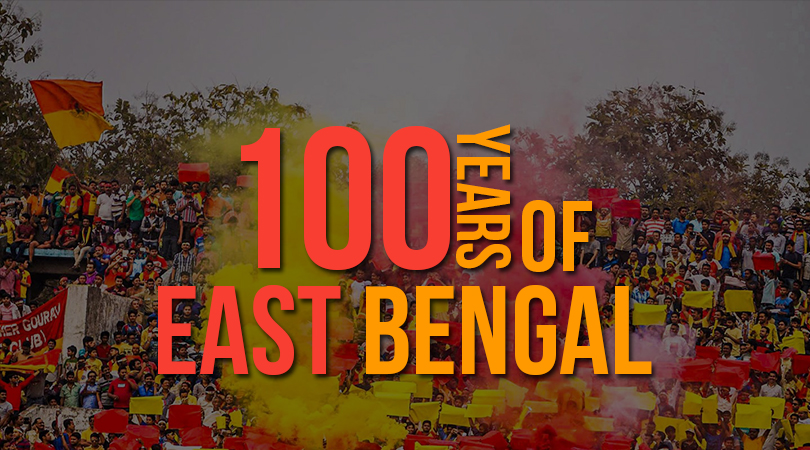
“I encounter millions of bodies in my life; of these millions, I may desire some hundreds; of these hundreds, I love only one. This other with who I am in love with designates for me the truth of my desire”, the French philosopher Ramon Barthes wrote in one of his lectures. He may have been speaking about a person, but he could as well be summing up the views of millions of people who support East Bengal FC. It is no wonder then, that club legend and one of India’s best defenders from the 80s, Manoranjan Bhattacharya proudly affirms,” My parents gave me birth, but East Bengal gave me an identity. I’ll always be indebted to this club.” Established as an institution to protest against the discrimination and struggle back in pre-independent India, East Bengal FC is based out of Kolkata and is one of India’s most historic football clubs. It is the only Indian club to have 3 international trophies to its name and has been the home to some of the country’s most legendary footballers. Boasting a supporter base that would put any top European club to shame, East Bengal has entered the hundredth year of their existence in 2019 and the celebrations have broken out in full flow amidst the fans. 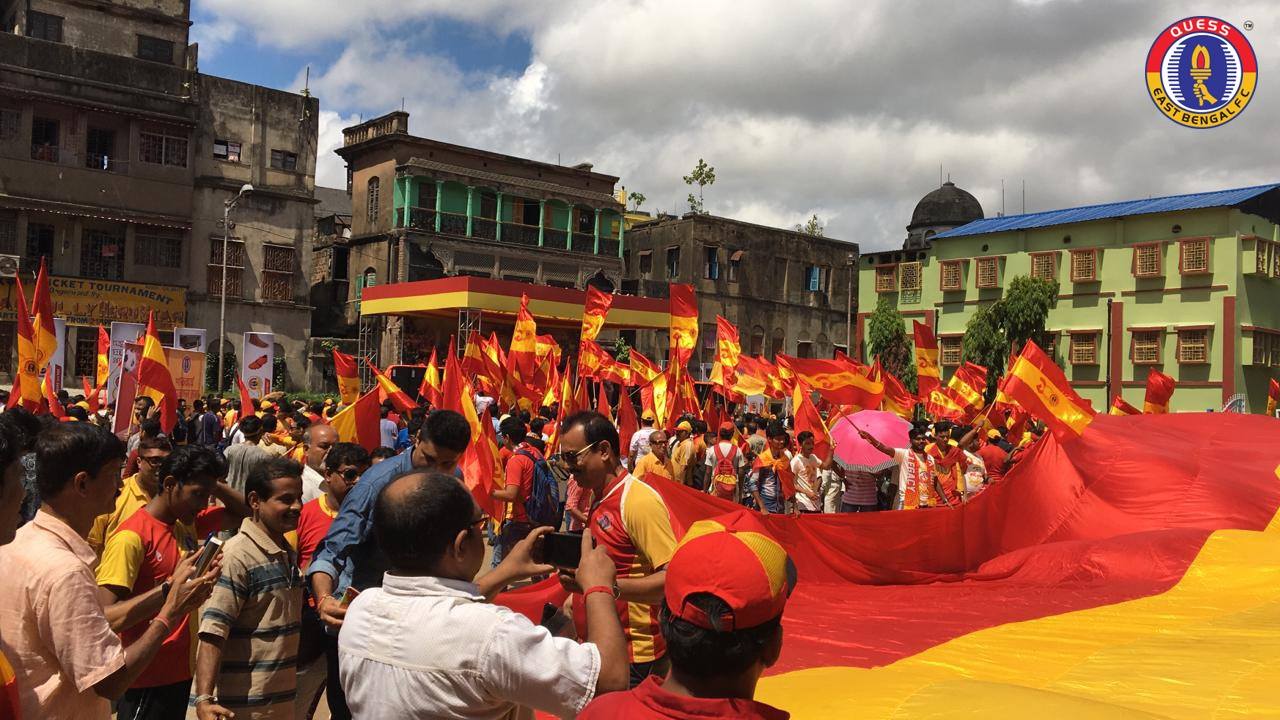 Centenary celebration of the Red & Gold brigade (Photo: Facebook) The new club found a benefactor in the form of the Maharaja of Santosh, Manmatha Nath Chaudhuri. Thanks to his patronage, East Bengal successfully overturned an age-old British ruling in 1924 which stated that only two Indian clubs could play at the top division of the Calcutta Football League. Mohun Bagan and Aryan enjoyed the privilege then, but with East Bengal winning the second division the season before they were insistent on playing in the top tier. That is where the Maharaja stepped in and used his considerable influence to change the laws and let them play in the first division.e system and they featured in the second division of the Calcutta Football League(CFL) next year.
Centenary celebration of the Red & Gold brigade (Photo: Facebook) The new club found a benefactor in the form of the Maharaja of Santosh, Manmatha Nath Chaudhuri. Thanks to his patronage, East Bengal successfully overturned an age-old British ruling in 1924 which stated that only two Indian clubs could play at the top division of the Calcutta Football League. Mohun Bagan and Aryan enjoyed the privilege then, but with East Bengal winning the second division the season before they were insistent on playing in the top tier. That is where the Maharaja stepped in and used his considerable influence to change the laws and let them play in the first division.e system and they featured in the second division of the Calcutta Football League(CFL) next year. 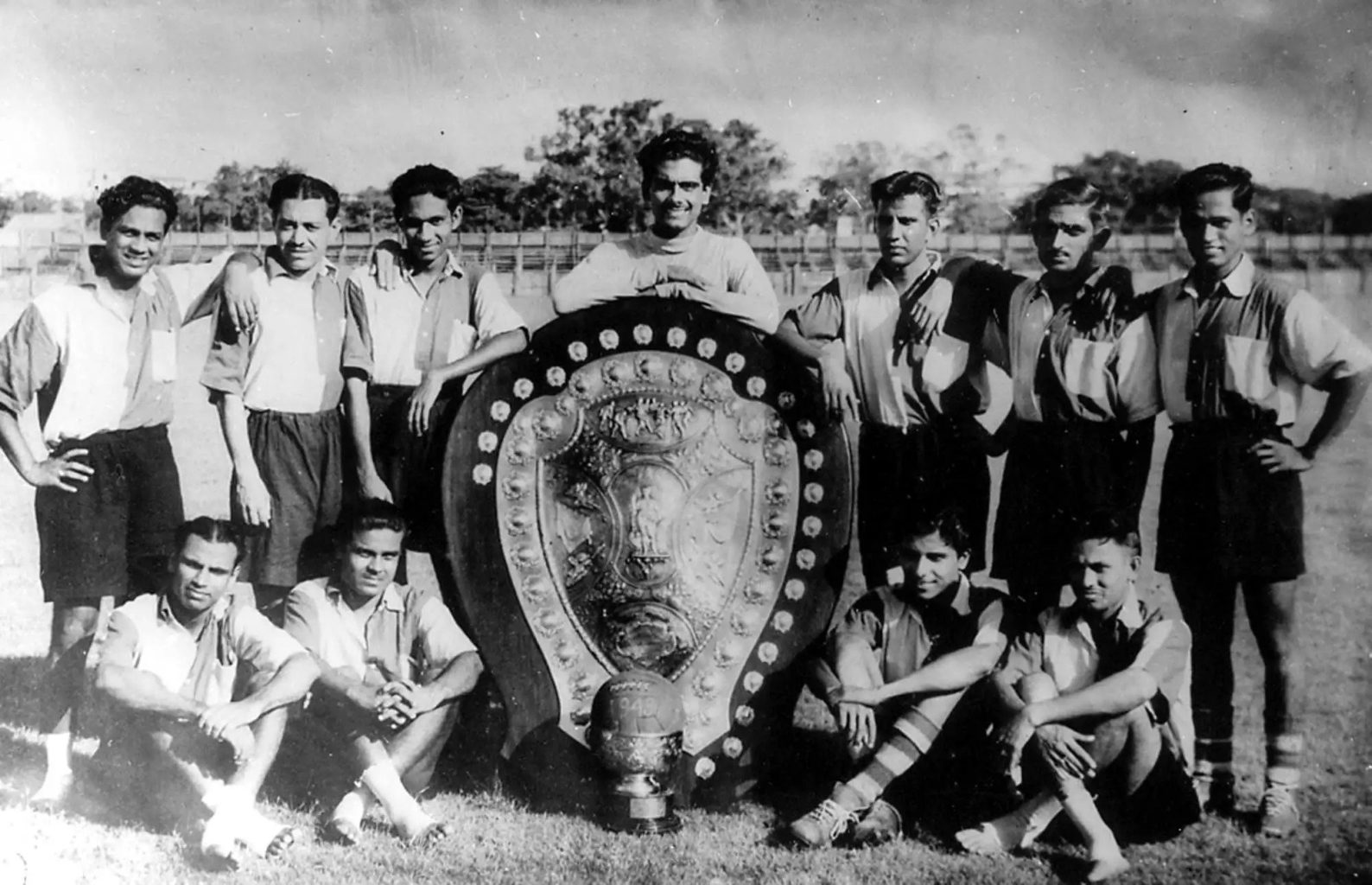 East Bengal team with the IFA Shield in 1949 (Photo: Times of India) As dynamic as the club’s on-field approach was (they were labelled as the “Best Club in India” by the FA’s 1952-53 almanac), their off-field fanbase grew exponentially larger. The partition had seen hordes of people leave their countries and find refuge in what is now West Bengal. The pain of losing everything they loved, settling in a foreign land and having to start all over from scratch intensified their feelings for East Bengal; in their football they found a safe haven to vent their feelings with others who had shared their fate. It may have been politics that caused them to leave the land that they had grown to love over centuries, but it was football that gave them the courage to accept the change and fight the inequality that they faced in their new state. The divide between the Bangals (those from East Bengal) and the Ghotis (the natives) grew and it soon took the shape of one of the most fabled football games in the world, the “Kolkata Derby” between East Bengal and Mohun Bagan.
East Bengal team with the IFA Shield in 1949 (Photo: Times of India) As dynamic as the club’s on-field approach was (they were labelled as the “Best Club in India” by the FA’s 1952-53 almanac), their off-field fanbase grew exponentially larger. The partition had seen hordes of people leave their countries and find refuge in what is now West Bengal. The pain of losing everything they loved, settling in a foreign land and having to start all over from scratch intensified their feelings for East Bengal; in their football they found a safe haven to vent their feelings with others who had shared their fate. It may have been politics that caused them to leave the land that they had grown to love over centuries, but it was football that gave them the courage to accept the change and fight the inequality that they faced in their new state. The divide between the Bangals (those from East Bengal) and the Ghotis (the natives) grew and it soon took the shape of one of the most fabled football games in the world, the “Kolkata Derby” between East Bengal and Mohun Bagan. 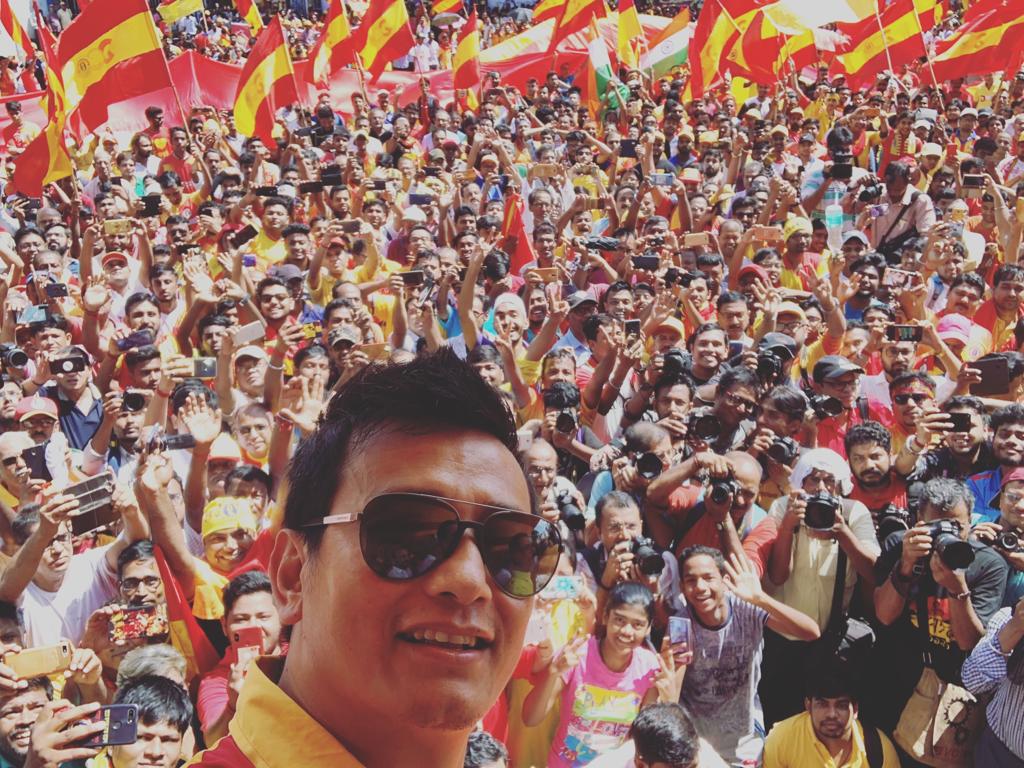 Former East Bengal and India legend, Bhaichung Bhutia joined the festivities (Photo: Twitter) Since the 70s, the standards have fallen but East Bengal still remains an extremely successful club in the modern era. They won three National Football league titles, eight Federation Cups, lifted the ASEAN Cup in 2003, reached the semi-finals of the AFC Cup in 2013, once again becoming the first Indian club to do so and of course, maintained a vice-like grip over the CFL title that was only broken by Mohun Bagan last year. Home to stalwarts of modern Indian football like Bhaichung Bhutia, Mehtab Hossein and the likes, East Bengal fans still remain one of the most loyal and fiercely supportive groups, who are also extremely proud of their rich culture and heritage.
Former East Bengal and India legend, Bhaichung Bhutia joined the festivities (Photo: Twitter) Since the 70s, the standards have fallen but East Bengal still remains an extremely successful club in the modern era. They won three National Football league titles, eight Federation Cups, lifted the ASEAN Cup in 2003, reached the semi-finals of the AFC Cup in 2013, once again becoming the first Indian club to do so and of course, maintained a vice-like grip over the CFL title that was only broken by Mohun Bagan last year. Home to stalwarts of modern Indian football like Bhaichung Bhutia, Mehtab Hossein and the likes, East Bengal fans still remain one of the most loyal and fiercely supportive groups, who are also extremely proud of their rich culture and heritage. 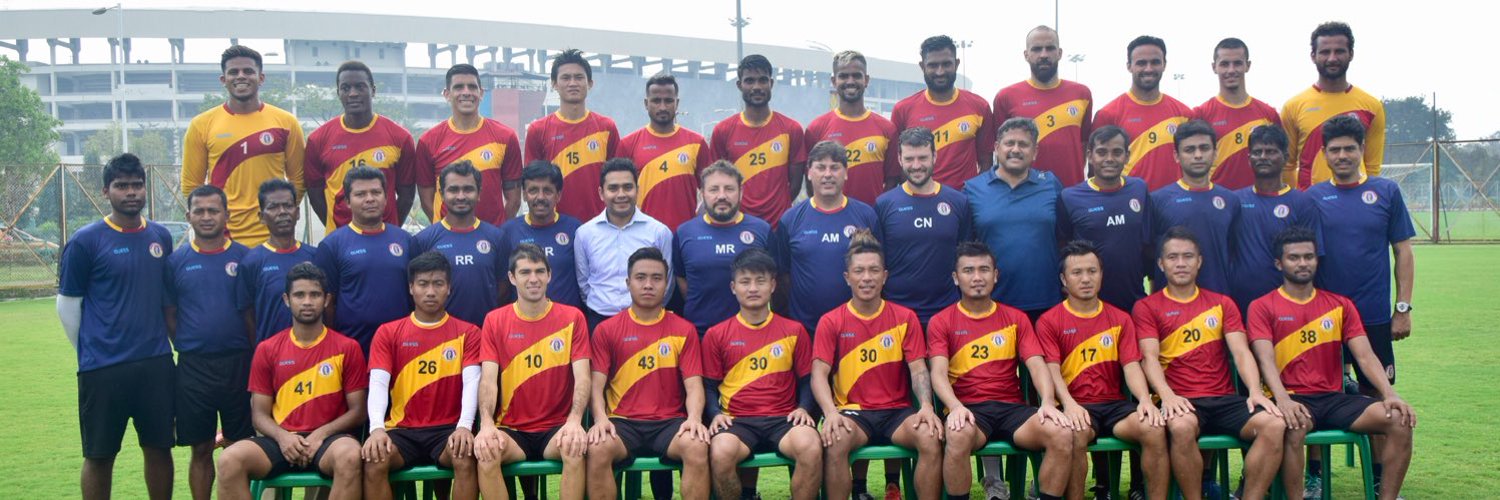 The present players of the East Bengal Brigade (Photo: Facebook) The supporters, however, as always, will be making their voices heard. Mass protests, rallies and social media movements have been initiated to make their voices heard, while fan-groups like the East Bengal Ultras have gone so far as to organize public chanting events in the form of European football clubs to show their displeasure at the manner in which their beloved institution is currently being run. One certainly hopes that for their sake and for the sake of Indian football, those in charge take the right call and ensure East Bengal continues to grow in stature and does justice to its vibrant past.
The present players of the East Bengal Brigade (Photo: Facebook) The supporters, however, as always, will be making their voices heard. Mass protests, rallies and social media movements have been initiated to make their voices heard, while fan-groups like the East Bengal Ultras have gone so far as to organize public chanting events in the form of European football clubs to show their displeasure at the manner in which their beloved institution is currently being run. One certainly hopes that for their sake and for the sake of Indian football, those in charge take the right call and ensure East Bengal continues to grow in stature and does justice to its vibrant past.
The birth of the “Bangal raag”
At the core of the club is the principal of anger or “Bangal raag”, as they call it colloquially. Exactly 100 years ago, that is on the 28th of July 1920, Suresh Chandra Chaudhury, a pioneering industrialist of the time stormed out of the-then Jorabagan club because of a star player, Shailen Bose was dropped for reportedly racial reason in a crucial tie against Mohun Bagan. Enraged by the treatment his player received, he along with Ramesh Chandra Sen, Aurobindo Ghosh and of course, Bose laid the foundation for East Bengal Football Club on 1st August 1920. The Indian Football Association, the state’s governing football body duly inducted the club into its league. Centenary celebration of the Red & Gold brigade (Photo: Facebook) The new club found a benefactor in the form of the Maharaja of Santosh, Manmatha Nath Chaudhuri. Thanks to his patronage, East Bengal successfully overturned an age-old British ruling in 1924 which stated that only two Indian clubs could play at the top division of the Calcutta Football League. Mohun Bagan and Aryan enjoyed the privilege then, but with East Bengal winning the second division the season before they were insistent on playing in the top tier. That is where the Maharaja stepped in and used his considerable influence to change the laws and let them play in the first division.e system and they featured in the second division of the Calcutta Football League(CFL) next year.
Centenary celebration of the Red & Gold brigade (Photo: Facebook) The new club found a benefactor in the form of the Maharaja of Santosh, Manmatha Nath Chaudhuri. Thanks to his patronage, East Bengal successfully overturned an age-old British ruling in 1924 which stated that only two Indian clubs could play at the top division of the Calcutta Football League. Mohun Bagan and Aryan enjoyed the privilege then, but with East Bengal winning the second division the season before they were insistent on playing in the top tier. That is where the Maharaja stepped in and used his considerable influence to change the laws and let them play in the first division.e system and they featured in the second division of the Calcutta Football League(CFL) next year. The early years and the pain of partition
Having procured the promotion, East Bengal settled in to stage themselves into a force in both Indian and Asian Football. By the late 40s, they had turned into a colossal presence, accentuated by the arrival of the “Panchapandavas”- Ahmed Khan, Venkatesh, Apparao, Dhanraj and Saleh. Post India’s independence in 1947, they became the first Indian club to defeat a foreign club (beat Chinese Olympic Team 2-0) in 1948 and the following year, they became the first to lift the domestic treble: CFL, IFA Shield and Rovers Cup. Within the next few years, they also became the first team to lift the IFA Shield for three successive seasons and also tour Europe. Led by the unabashed brilliance of captain Khan, they finished fourth in an invitational tournament in Romania. East Bengal team with the IFA Shield in 1949 (Photo: Times of India) As dynamic as the club’s on-field approach was (they were labelled as the “Best Club in India” by the FA’s 1952-53 almanac), their off-field fanbase grew exponentially larger. The partition had seen hordes of people leave their countries and find refuge in what is now West Bengal. The pain of losing everything they loved, settling in a foreign land and having to start all over from scratch intensified their feelings for East Bengal; in their football they found a safe haven to vent their feelings with others who had shared their fate. It may have been politics that caused them to leave the land that they had grown to love over centuries, but it was football that gave them the courage to accept the change and fight the inequality that they faced in their new state. The divide between the Bangals (those from East Bengal) and the Ghotis (the natives) grew and it soon took the shape of one of the most fabled football games in the world, the “Kolkata Derby” between East Bengal and Mohun Bagan.
East Bengal team with the IFA Shield in 1949 (Photo: Times of India) As dynamic as the club’s on-field approach was (they were labelled as the “Best Club in India” by the FA’s 1952-53 almanac), their off-field fanbase grew exponentially larger. The partition had seen hordes of people leave their countries and find refuge in what is now West Bengal. The pain of losing everything they loved, settling in a foreign land and having to start all over from scratch intensified their feelings for East Bengal; in their football they found a safe haven to vent their feelings with others who had shared their fate. It may have been politics that caused them to leave the land that they had grown to love over centuries, but it was football that gave them the courage to accept the change and fight the inequality that they faced in their new state. The divide between the Bangals (those from East Bengal) and the Ghotis (the natives) grew and it soon took the shape of one of the most fabled football games in the world, the “Kolkata Derby” between East Bengal and Mohun Bagan. From the roaring 70s to the modern day
In 1971, the creation of Bangladesh provided another source of agony for those living in Bengal. Still suffering from the wounds of partition, they had to undergo another tumultuous period as the violence and the resulting ravages saw them reduced to “bera-paar” (outsiders) in every sphere of society. That seething range of being forsaken, economically destroyed and left to endure the indifference of those around them once again found its solace in the lush green grounds of the East Bengal tents. Boosted by the presence of visionary administrators and players of the calibre of Manoranjan, Subhas Bhowmick, Bhaskar Ganguly, the Iranian Maradona Majid Bishkar and the likes, East Bengal displayed unprecedented dominance in the national circuit. They won the CFL six times in a row, a record which they later broke this decade when they lifted it eight successive times; won the treble again in 1972 and demolished arch-rivals Mohun Bagan 5-0 in the 1975 IFA Shield Final. The final is also widely accepted as the game that gave birth to the “Moshal”, or the torch which has now become a part of East Bengal’s logo. Former East Bengal and India legend, Bhaichung Bhutia joined the festivities (Photo: Twitter) Since the 70s, the standards have fallen but East Bengal still remains an extremely successful club in the modern era. They won three National Football league titles, eight Federation Cups, lifted the ASEAN Cup in 2003, reached the semi-finals of the AFC Cup in 2013, once again becoming the first Indian club to do so and of course, maintained a vice-like grip over the CFL title that was only broken by Mohun Bagan last year. Home to stalwarts of modern Indian football like Bhaichung Bhutia, Mehtab Hossein and the likes, East Bengal fans still remain one of the most loyal and fiercely supportive groups, who are also extremely proud of their rich culture and heritage.
Former East Bengal and India legend, Bhaichung Bhutia joined the festivities (Photo: Twitter) Since the 70s, the standards have fallen but East Bengal still remains an extremely successful club in the modern era. They won three National Football league titles, eight Federation Cups, lifted the ASEAN Cup in 2003, reached the semi-finals of the AFC Cup in 2013, once again becoming the first Indian club to do so and of course, maintained a vice-like grip over the CFL title that was only broken by Mohun Bagan last year. Home to stalwarts of modern Indian football like Bhaichung Bhutia, Mehtab Hossein and the likes, East Bengal fans still remain one of the most loyal and fiercely supportive groups, who are also extremely proud of their rich culture and heritage. The fight still continues…
Struggle and pain have always been a part of the East Bengal fabric and in the 100 years since they were formed, nothing much has changed. Despite the arrival of its centenary celebrations, the club is currently caught up with two pressing issues: the future of the I-League, the league in which it has played since 2007 and the reported exit of its primary investors. Both these two issues have the capability to potentially decide the future of East Bengal FC, and it is imperative for the management to make the right choices, putting aside their petty differences. The present players of the East Bengal Brigade (Photo: Facebook) The supporters, however, as always, will be making their voices heard. Mass protests, rallies and social media movements have been initiated to make their voices heard, while fan-groups like the East Bengal Ultras have gone so far as to organize public chanting events in the form of European football clubs to show their displeasure at the manner in which their beloved institution is currently being run. One certainly hopes that for their sake and for the sake of Indian football, those in charge take the right call and ensure East Bengal continues to grow in stature and does justice to its vibrant past.
The present players of the East Bengal Brigade (Photo: Facebook) The supporters, however, as always, will be making their voices heard. Mass protests, rallies and social media movements have been initiated to make their voices heard, while fan-groups like the East Bengal Ultras have gone so far as to organize public chanting events in the form of European football clubs to show their displeasure at the manner in which their beloved institution is currently being run. One certainly hopes that for their sake and for the sake of Indian football, those in charge take the right call and ensure East Bengal continues to grow in stature and does justice to its vibrant past. Next Story

